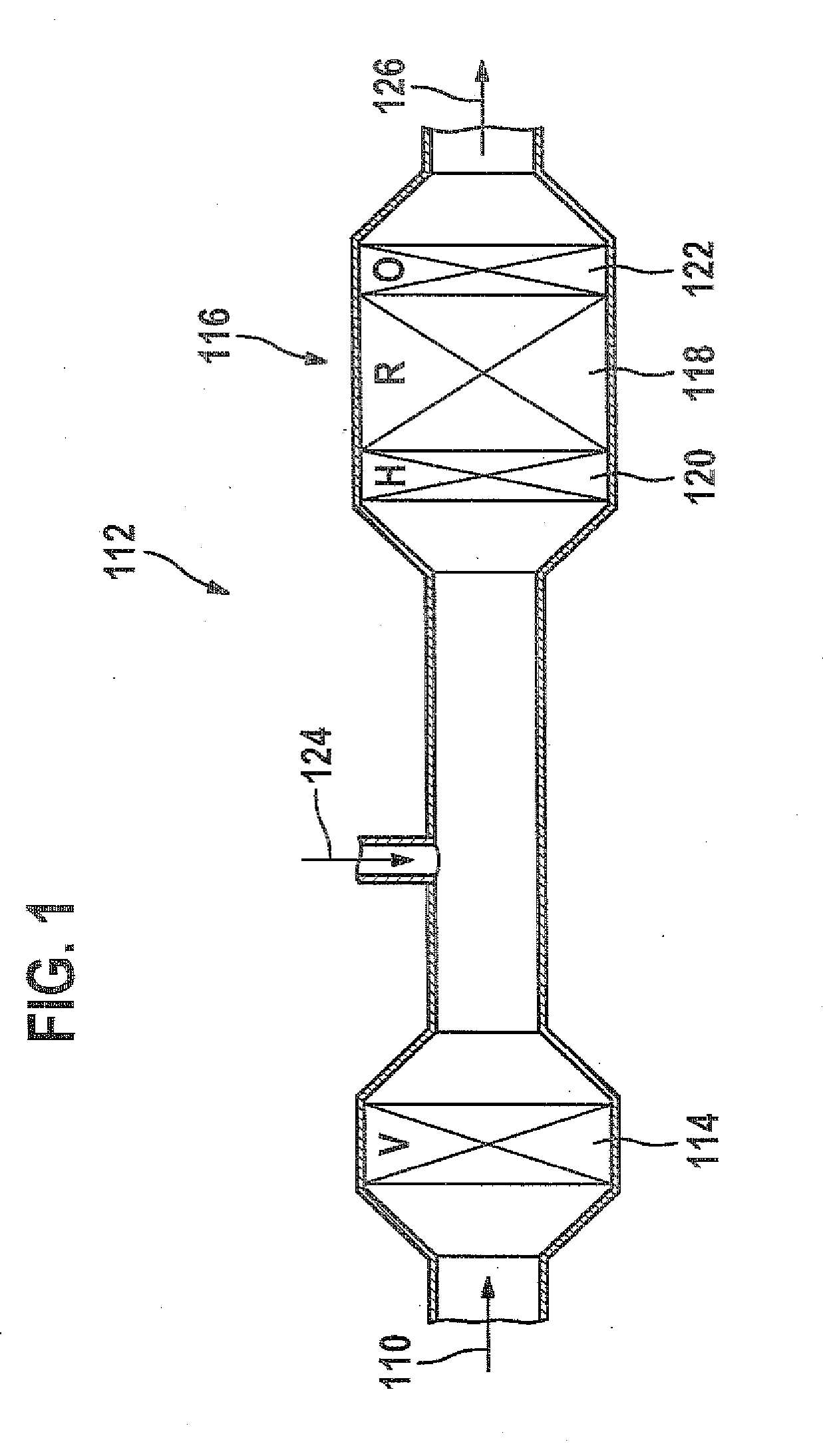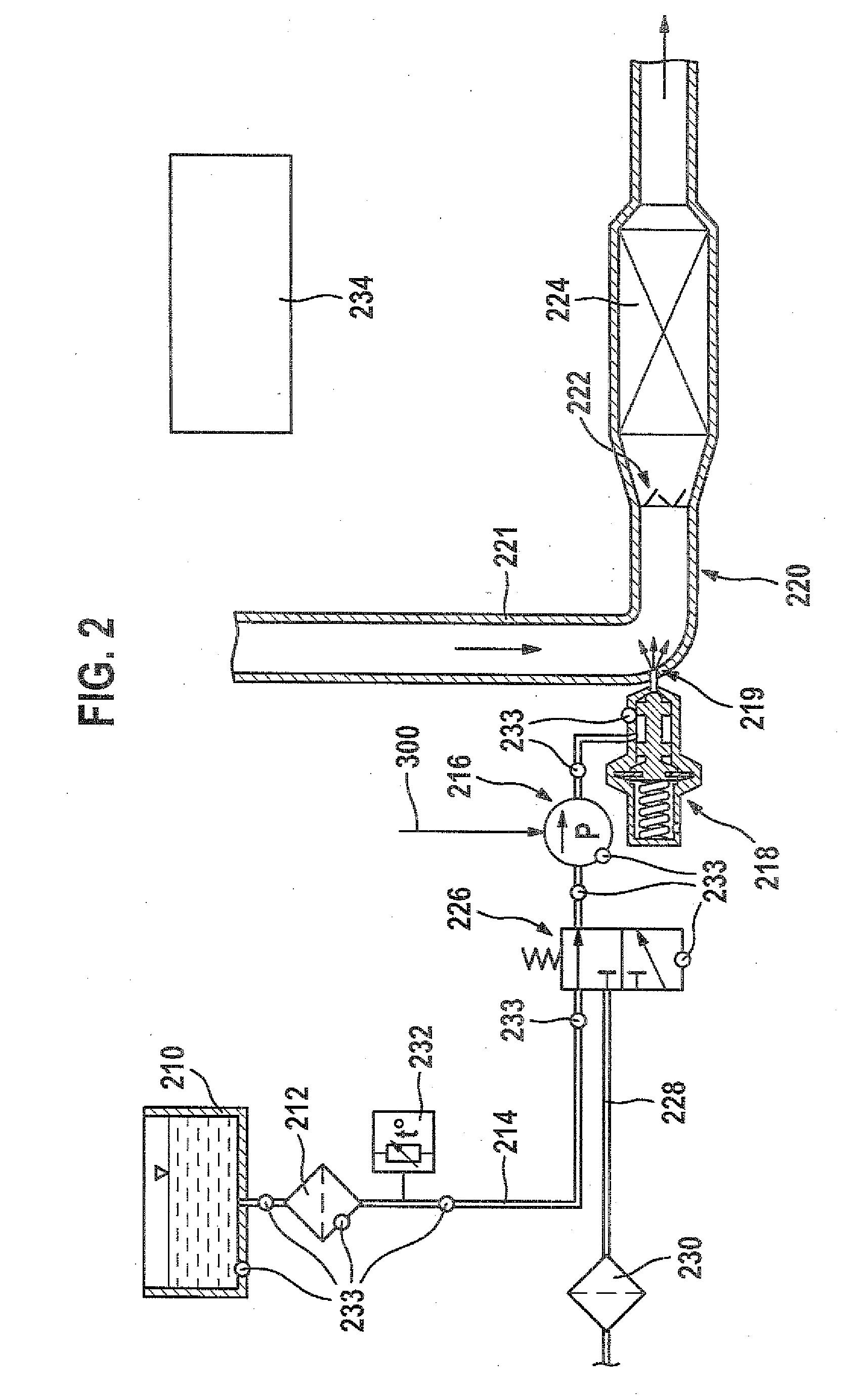Method and metering system for reducing pollutants in motor vehicle exhaust gases
a technology of motor vehicles and exhaust gases, applied in the direction of machines/engines, mechanical equipment, separation processes, etc., can solve the problems of difficult winter operation of such systems, affecting the operation of compressed air injection methods, and affecting the mark
- Summary
- Abstract
- Description
- Claims
- Application Information
AI Technical Summary
Benefits of technology
Problems solved by technology
Method used
Image
Examples
Embodiment Construction
[0020]FIG. 1 shows an example of a system for selective catalytic reduction (SCR) of the kind that is particularly of interest in the commercial vehicle sector.
[0021]In this system, exhaust gases 110 from an internal combustion engine are introduced into a two-stage catalytic converter 112. The two-stage catalytic converter 112 has a primary catalytic converter 114 and a main catalytic converter 116. The latter in turn has a reduction catalytic converter 118, a hydrolysis catalytic converter 120, and an oxidation catalytic converter 122. The reducing agent 124 is introduced into the exhaust system, for example in an air-supported fashion, upstream of the reduction catalytic converter 118. This aqueous aerosol 124 is disintegrated through thermolysis and subsequent catalyzed hydrolysis and produces the actual reducing agent ammonia which in turn reacts with the nitrogen oxides of the engine exhaust gases 110 and converts them into nitrogen oxide-reduced exhaust gases 126. The use of ...
PUM
| Property | Measurement | Unit |
|---|---|---|
| Temperature | aaaaa | aaaaa |
| Time | aaaaa | aaaaa |
| Pressure | aaaaa | aaaaa |
Abstract
Description
Claims
Application Information
 Login to View More
Login to View More - R&D
- Intellectual Property
- Life Sciences
- Materials
- Tech Scout
- Unparalleled Data Quality
- Higher Quality Content
- 60% Fewer Hallucinations
Browse by: Latest US Patents, China's latest patents, Technical Efficacy Thesaurus, Application Domain, Technology Topic, Popular Technical Reports.
© 2025 PatSnap. All rights reserved.Legal|Privacy policy|Modern Slavery Act Transparency Statement|Sitemap|About US| Contact US: help@patsnap.com



